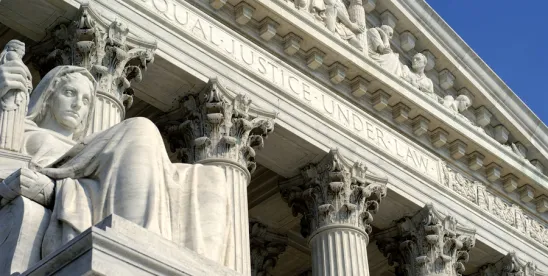On April 29, 2024, the Supreme Court issued an Order List indicating that certiorari had been denied in Brinker International, Inc. v. Steinmetz, Docket No. 23-648.
The Eleventh Circuit Brinker Decision
Brinker was a July 2023 Eleventh Circuit decision affirming class certification and holding that class members’ exposure of their payment information to the dark web was sufficient harm to establish standing in a data breach case. The Eleventh Circuit set forth an expansive view of when data breaches can create Article III constitutional standing to support class action certification. The case arose from a 2018 attack on Chili’s restaurant computer systems, after which hackers posted stolen customer credit card data to an online marketplace for stolen information on the dark web. The Eleventh Circuit held that class members who alleged their credit card information was exposed for sale on the dark web had satisfied the “actual misuse” standard for sufficient harm giving rise to standing.
As to class certification, the Eleventh Circuit considered the defendants’ argument that individualized damages claims would predominate over issues common to the class under Rule 23(b)(3) but explained:
At the class certification stage, all that the named plaintiffs had to prove was that a reliable damages methodology existed, not the actual damages plaintiffs sustained.” In that case, “plaintiffs’ expert provided the District Court with a common methodology for calculating damages based on ‘a standard dollar amount for lost opportunities to accrue rewards points (whether or not they used a rewards card), the value of cardholder time (whether or not they spent any time addressing the breach), and out-of-pocket damages (whether or not they incurred any out-of-pocket damages).’
This methodology used an average figure because the expert believed the differences in damages among class members was “minimal.” The Eleventh Circuit was satisfied that the district court’s class certification on this approach was appropriate because individual inquiries would “not predominate over the three categories of common damages inquiries analyzed by the plaintiffs’ expert.”
The Circuit-Court Split and Supreme Court Appeal
It was from this decision that the defendants appealed to the Supreme Court in December 2023, submitting a petition for certiorari that highlighted “a stark circuit split on the foundational question of law” because the eight other circuits that have considered the issue had taken a different approach. The petitioner argued that the predominance requirement of Rule 23(b)(3) cannot be met using the same average amount of damages for all class members, even those who did not suffer corresponding harm and who could never have recovered that average amount in an individual action.
The petitioner highlighted the First Circuit’s decision in In re Asacol Antitrust Litigation, 907 F.3d 42 (1st Cir. 2018), in which that court explained that “[t]he aim of the predominance inquiry is to test whether any dissimilarity among the claims of class members can be dealt with in a manner that is not ‘inefficient or unfair.’” Id. at 51 (quotation omitted). In Asacol, the First Circuit rejected an expert model purporting to demonstrate commonality by showing that 90% of class members were injured, reasoning that the model could not possibly show that any given individual class member was injured. Id. at 54-55. The petitioner likened the rejected approach in Asacol as akin to what the Eleventh Circuit accepted in Brinker, lumping together differently situated class members:
Whether a customer suffered any such harms, and, if so, in what amount, differs greatly from person to person. Yet plaintiffs proposed to certify a class by avoiding adjudication of these inherently individualized issues and instead compensating every class member in the exact same amount for multiple categories of supposed damages, allegedly representing “average” damages across all class members. As both courts below openly admitted, however, the compensation would be awarded “whether or not” a given class member actually suffered—or even claimed to have suffered—the alleged injuries in question.
(citations omitted, emphasis in original). The petitioner argued that this approach misinterpreted the Supreme Court’s decision in Tyson Foods, Inc. v. Bouaphakeo, 577 U.S. 442 (2016) and defied the Court’s directive in Wal-Mart Stores, Inc. v. Dukes, 564 U.S. 338, 367 (2011) that “a class cannot be certified on the premise that the unique realities of each individual claim will simply be ignored.”
Emphasizing the need for the Supreme Court to reverse and endorse the reasoning of Asacol, the petitioner claimed the Brinker decision “threatens to significantly lower, if not obliterate, the high bar for class certification” in the Eleventh Circuit. The petitioner warned: “if this Court does not review the Eleventh Circuit’s error now, it may never have another chance to do so.”
The Supreme Court nonetheless declined to hear the case, leaving the Eleventh Circuit’s decision intact and permitting the distinct split among the circuit courts to continue.



 />i
/>i

